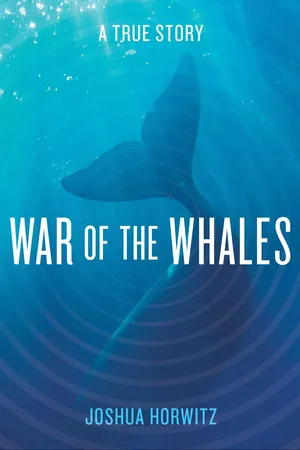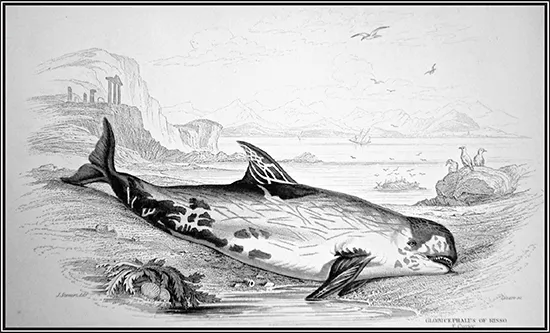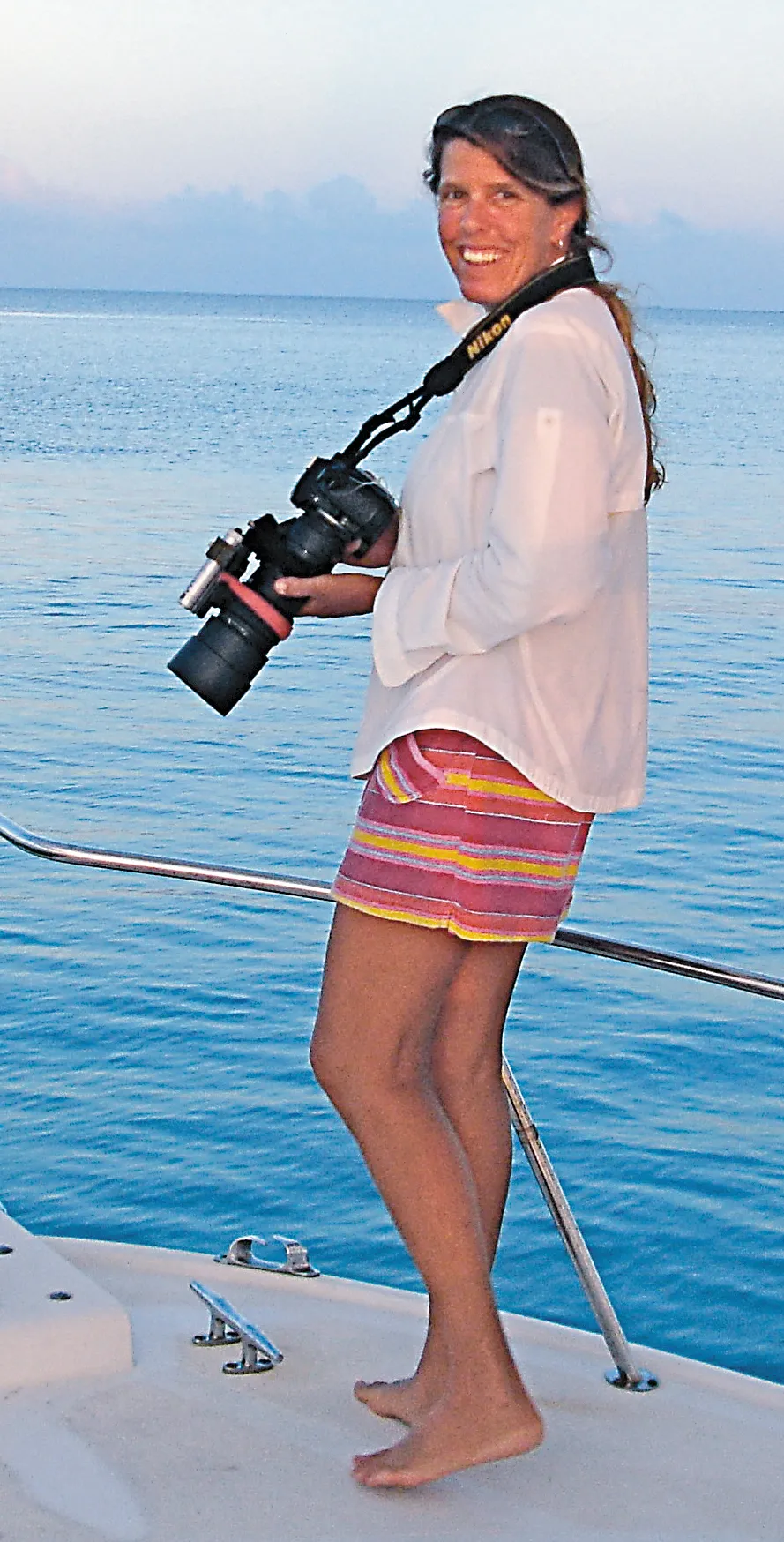![]()
PART ONE
STRANDED
I have met with a story which, although authenticated by undoubted evidence, looks very like a fable.
—Pliny the Younger, Letters (on hearing reports of a boy riding on the back of a dolphin in the first century AD)
![]()
1
The Day the Whales Came Ashore
DAY 1: MARCH 15, 2000, 7:45 A.M.
Sandy Point, Abaco Island, the Bahamas
Powered by his second cup of coffee, Ken Balcomb was motoring through his orientation speech for the Earthwatch Institute volunteers who had flown in the night before. The workday started early at Sandy Point, and Balcomb was eager to finish his spiel and head out onto the water before the sun got high and hot.
“Take as many pictures as you like,” he told them, “but leave the marine life in the ocean. Conches in the Bahamas are listed as a threatened species, so you can’t take their shells home as souvenirs.”
After a breakfast of sliced papaya and peanut butter sandwiches, a dozen volunteers sprawled across the worn couches of the modest beachfront house that Balcomb rented with his wife and research partner, Diane Claridge. Here, on the underpopulated southwestern tip of Abaco, far from the posh resorts on the tiny Out Islands elsewhere in the Bahamas, the only tourist activity was bonefishing in the clear, bright shallows of the continental shelf. What the tourists rarely glimpsed, and what the volunteers had come to see, were the reclusive Cuvier’s and Blainville’s beaked whales of the Great Bahama Canyon.
For the past 15 years, the Earthwatch volunteer program had provided the sole financial support for the decadelong photo-identification survey of the beaked whales here in the Bahamas and of the killer whales in the Pacific Northwest. The Earthlings, as Ken and Diane called them, traveled from across the United States and around the world to assist their survey and to catch a fleeting glance of the deepest-diving creatures in the ocean: the beaked whales that lived inside the underwater canyon offshore from Sandy Point. For the most part, they were altruistic tourists, from teenagers to golden-agers, looking for a useful vacation from the winter doldrums up north. At Sandy Point, they could learn a little about whales, lend a hand in a righteous eco-science project, and enjoy the Bahamian sunshine.
![]()
Earthwatch volunteers set out to observe beaked whales off of Abaco Island.
![]()
Occasionally, one of the volunteers got hooked on the research and never went home. While still a teenager in landlocked Missouri, Dave Ellifrit had seen Balcomb’s photos of killer whales in a magazine. That summer, he showed up at Smugglers Cove on San Juan Island, off the coast of Washington, to help with the annual survey. Ellifrit was immediately at home with the open-boat work, despite the pale complexion that came with his bright red hair. Fifteen years later, he was still working for room and board as a year-round researcher—at Smugglers Cove in the summer and at Sandy Point in the winter. Balcomb and Claridge had more or less adopted the young man, mentoring him in whale research and helping pay his way through an environmental science program at Evergreen State College in Washington.
While Balcomb finished briefing the Earthlings on the details of photo identification and log entries, Ellifrit was on the beach readying the motorboats for the day’s survey. “Don’t be disappointed if you don’t see any beaked whales your first day out,” Balcomb explained to the volunteers. “They range all over the canyon and surface only about once an hour, rarely in the same place twice. So unless you get lucky, you won’t be grabbing any photos at first.”
![]()
Diane Claridge on the lookout for marine mammals in the Great Bahamas Canyon, where she and Ken Balcomb studied the beaked whale population from 1991–2000, and where she continues to conduct research.
![]() Balcomb explained the differences between the Cuvier’s and Blainville’s beaked whales that he and Claridge had catalogued over the past decade. Some of the more studious Earthlings took notes. Others were busy applying an extra layer of sunblock, which was fine with Balcomb. He didn’t want to spend his evening nursing sunburned volunteers.
Balcomb explained the differences between the Cuvier’s and Blainville’s beaked whales that he and Claridge had catalogued over the past decade. Some of the more studious Earthlings took notes. Others were busy applying an extra layer of sunblock, which was fine with Balcomb. He didn’t want to spend his evening nursing sunburned volunteers.![]()
Ken Balcomb on his porch in Smugglers Cove, San Juan Island, Washington. He has conducted an annual summer survey of the resident orca community since 1976.
![]()
Balcomb had the weather-beaten look of someone who’ d spent most of his six decades on the water, and about ten minutes focused on his wardrobe. Every morning, he pulled on whatever free promotional T-shirt he’ d fished out of the pile in his closet and stepped into a nondescript pair of sun-bleached shorts and the flip-flops he’ d stepped out of the night before. He wore his hair shaggy or cropped short, depending on how recently Diane had taken the shears to him, topped off by whatever baseball cap the last group of Earthlings had left behind. Balcomb’s face was mostly covered by a thick salt-and-pepper beard, and his bright, constantly watchful eyes had the reverse-raccoon look that comes from wearing sunglasses 12 months a year.
Even standing in the living room, he kept his legs planted in the wide stance of a man accustomed to life on boats, flexed just enough to absorb any unexpected pitch or roll. “There are only a few dozen whales in the whole canyon, and some weeks we only see a handful of them,” he continued. “But there’s lots of other marine life out there if you keep your eyes peeled.”
A college-aged young woman raised her hand. “What do we do about the sharks?”
“The sharks are nothing to worry about unless there’s blood in the water,” Balcomb said with a smile. “So any of you women . . .” Claridge winced in anticipation of an off-color punch line she’ d heard too many times. Balcomb liked to tease his beautiful Bahamian wife about her British reserve, and he couldn’t resist trying to bring a blush to her pale, almost Nordic face. “. . . if it’s your time of month, you might want to stay in the boat, because—”
The screen door banged open. Everyone looked up to see Dave Ellifrit, out of breath and wide eyed. When his eyes found Balcomb’s, he said, almost matter-of-factly, “There’s a whale on the beach.”
Claridge grabbed the camcorder off the kitchen counter and raced out the door. Balcomb jogged down the beach behind her, slowing to a walk as he reached the water’s edge.
The whale lay helpless in three feet of water, its spindle-shaped body lodged in the sand, while its tail fluke splashed listlessly in the shallows.
Balcomb couldn’t believe how close to the house the animal had stranded: less than 100 feet up the beach. It was a Cuvier’s—and it was alive. A live Cuvier’s beaked whale! How was that possible? His mind raced to fix on a reference point. The last beaked whale to strand alive in these waters had come ashore decades ago, back in the early 1950s, on the north side of the island.
Balcomb had been chasing after various species of beaked whales for most of his life. As a teenaged beachcomber in California, he’ d thought of beaked whales as emissaries from the distant past: modern dinosaurs that jealously guarded the secrets of their evolutionary journey from the Eocene Age. He’ d walked countless miles of coastline in search of bone fragments, hoping to piece together small skeletal sections, waded knee-deep through piles of discarded organs outside whaling stations on four continents, searching for some anatomical prize tucked away inside—a tusk or a vertebra or, the rarest of treasures, a skull. In his twenties, he’ d begun photographing beaked whales during whale survey expeditions in the Pacific. For a dozen winters, he’ d sailed a tall ship along the Atlantic Seaboard, charting whale migrations and searching for beaked whales from Newfoundland to the Dominican Republic.
For the past ten seasons, he and Claridge had staked out a “species hot spot” in the Great Bahama Canyon, waiting with loaded cameras in small boats to photograph and videotape, classify and catalogue the resident community of Cuvier’s and Blainville’s beaked whales. But until the morning of March 15, 2000, he had never touched a live beaked whale. And now, right at his feet, lay a living, breathing specimen. For a hardcore bone-hunting beachcomber like Balcomb, this was an embarrassment of riches. An intact beaked whale that could provide a window into its functional anatomy, and a complete skeleton!
Balcomb was a realist. He knew that most whales that strand alive don’t survive. By the time a whale comes ashore, too much has already gone wrong. Stranding is simply too severe a trauma for most whales to sustain. If he pushed this one back out to sea in such shaky condition, the sharks would likely tear it to pieces before it traversed the two-mile gauntlet of shallows and reached the safety of the canyon depths. He considered the possibility of ushering the whale alongside a boat to the nearby lagoon. If it died, he could harvest the organs, fix them in formaldehyde, and ship the skeleton up to Jim Mead, the marine mammal curator at the Smithsonian Institution. Even Mead had never collected a complete Cuvier’s skeleton.
Balcomb crouched down in the water beside the whale. It was about 16 feet long; average for an immature male Cuvier’s. He could tell its sex and approximate age from the distinctive pair of slightly protruding lower tusks that are visible only in males. Balcomb leaned in close to get a whiff of his breath. It smelled fine, not putrid like a sick whale’s would be. And he wasn’t wasted away by ear parasites, a common affliction of stranded whales.
The whale certainly looked healthy. His eyes weren’t dilated, and he didn’t show any outward signs of a ship collision that would have caused a concussion or brain damage. The whale’s right eye gazed steadily back at him, signaling—what? Confusion? Fear? How the hell could he tell? He was a whale researcher, not a mind reader. He’ d never made close eye contact with a beaked whale before. Had anyone?
“What in the world are you doing here?” Balcomb asked aloud. He laid a hand gently on the whale’s back. Its skin was as soft and smooth as an inner tube. It still felt cool to the touch, not overheated or dehydrated. That would change in a hurry if they couldn’t get him off the beach. Balcomb noted the position of the sun, already well above the horizon line and climbing. He rocked the whale to one side and examined the fresh scratches along its belly, probably from the nearby coral reef. Just a thin strand of blood hanging in the water. Nothing life threatening, so long as the sharks didn’t pick up the scent.
That’s when he saw the rake marks across the whale’s flank and the cookie-cutter scars on his dorsal fin. For a decade, their team had been photo-identifying the local beaked whales by their unique scarring patterns. Torso scrapes were from the jagged canyon walls or else souvenir tooth rakes from sparring matches among bulls during mating season. The distinctive scar pattern on the dorsal fins came from encounters with small cookie-cutter sharks that feed on their prey by gouging tiny round plugs, as if cut out with a cookie cutter.
![]()
Cuvier’s beaked whales dive to depths of greater than a mile for more than an hour at a time, surfacing only briefly to breathe. Individual Cuvier’s beaked whales can be identified by the scratches on their backs and dorsal fins from mating competitions.
Blainville’s beaked whales are smaller than Cuvier’s, but have similar diving and hunting behaviors. The “beak” refers to the rostrum or snout of the whale, which is elongated rather than blunt-headed. Individual identification, once considered impossible, is facilitated by the light oval scars from the bites of cookie-cutter sharks.
![]()
Balcomb recognized the pattern from a photo he’ d shot two weeks earlier. “Look at this,” he said to Ellifrit, who stood watch for sharks in the shallows.
Ellifrit crouched down next to Balcomb. “Zc-34, right?” he said. “We ID’ d him off of South Point. Last month.”
“That’s what I think. Yeah, definitely.” Balcomb and Claridge assigned their research subjects alphanumeric identifiers, according to their species and social rank in the pod. Zc stood for the Cuvier’s scientific name: Ziphius cavirostris. They weren’t interested in giving them cute and cuddly names, as if they were house pets. Balcomb and Claridge were serious scientists, not whale huggers.
But now that Balcomb had recognized the animal and remembered the afternoon when they’ d patiently tracked him through three dives and ascents before finally grabbing a clear-enough photo to make a positive ID . . . now it was impossible to see him as just a skeleton surrounded by organs and blubber. Balcomb snapped out of his fantasy of collecting a complete beaked whale specimen and began working to dislodge Zc-34 from the beach.
He scanned the water’s surface for sharks. No problems on that front. Yet. The Earthlings stood around in a loose semicircle on the beach, looking as disoriented as the whale. Ten minutes earlier they’ d been sipping coffee and wondering if they’ d applied enough sunscreen for the day’s outing. They didn’t understand what was happening, and no one was stopping to explain it to them. Balcomb couldn’t make sense of it himself. All he knew was that this whale was in the wrong place, going in the wrong direction, and if he didn’t get him back to deep water in a hurry, he would die here on the beach.
“Get out of the water, before some shark shows up,” Balcomb said to Ellifrit. “And keep the Earthwatchers on the beach. I’m going to try to dig this guy out of here.” He reached underneath the whale’s belly and scooped out handfuls of wet sand and shells. If he cut his hands on coral or shells, it would only bring the sharks in faster. So he worked slowly, handful by handful, to excavate a trench beneath the whale. Claridge, who routinely videotaped everything of documentary significance in their survey, stood just outside the water’s edge and kept recording.
After ten...







